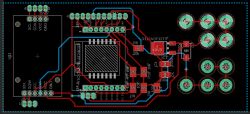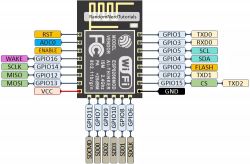Hello, I am working on my first project in Eagle, in order to get to know the program and learn how to design. It fell on an LED lamp. I should add that the board is not of my own making, but borrowed from one of the posts from this forum (with minor aesthetic tweaks).
1 I would like to add a DS3231 to it to create an LED clock, however I have a problem with the SCL and SDA connections. I gather from the ESP8266 datasheet note that I need to connect these pins from the DS3231 to GPIO2 (SDA) and GPIO14 (SCL), however it also says that GPIO14 is responsible for the IR. Have I misunderstood this? How do I solve this so that one does not interfere with the other?
2 Also, how should I use SQW and 32kHz in my project? I should connect a quartz resonator to the 32kHz to make it work at all? What about the SQW?
3. what about the signals on the right side of the DS3231? GND and VCC to ground? What about SCL_2 and SDA_2? I understand that these are my IC output signals, but what to do with them? Should they be somehow connected to the LED lights (I will want to use the WS2812)?
Thanks in advance for your time. I'll also add for my defence that I'm a second year student and we haven't had anything design related yet. I am trying to do some design on my own as a hobby.
Greetings.
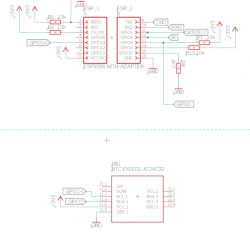
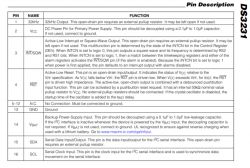
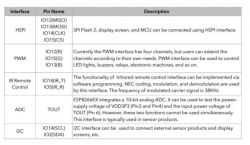 .
.
1 I would like to add a DS3231 to it to create an LED clock, however I have a problem with the SCL and SDA connections. I gather from the ESP8266 datasheet note that I need to connect these pins from the DS3231 to GPIO2 (SDA) and GPIO14 (SCL), however it also says that GPIO14 is responsible for the IR. Have I misunderstood this? How do I solve this so that one does not interfere with the other?
2 Also, how should I use SQW and 32kHz in my project? I should connect a quartz resonator to the 32kHz to make it work at all? What about the SQW?
3. what about the signals on the right side of the DS3231? GND and VCC to ground? What about SCL_2 and SDA_2? I understand that these are my IC output signals, but what to do with them? Should they be somehow connected to the LED lights (I will want to use the WS2812)?
Thanks in advance for your time. I'll also add for my defence that I'm a second year student and we haven't had anything design related yet. I am trying to do some design on my own as a hobby.
Greetings.


 .
.







